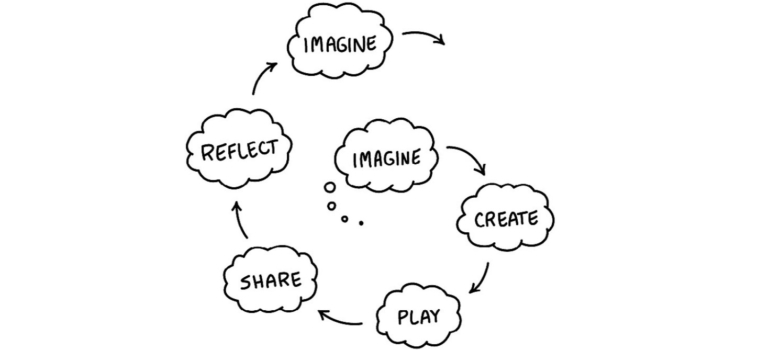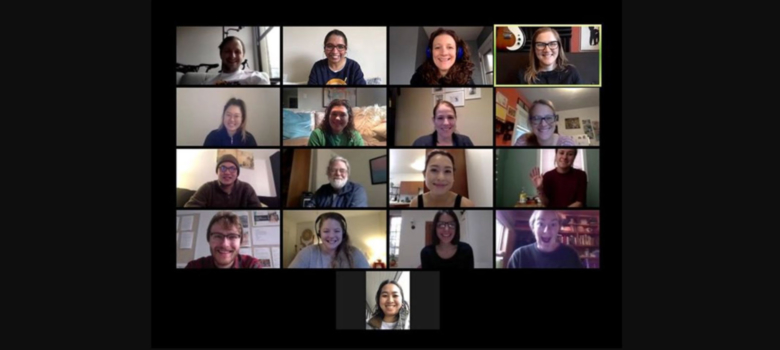By Laura Henneghan, Early Elementary Teacher
“The challenge is not how to ‘teach creativity’ to children, but rather how to create a fertile environment in which their creativity will take root, grow, and flourish.”
At UCDS, we value innovation and aim to cultivate creative thinking in our students. As an educator with a background in Visual Art, I find the topic of fostering creativity to be absolutely fascinating. As I watch my Early Elementary students engage in open-ended projects–from building with Duplos to painting with watercolors and using recycled items in “Creation Station”—I find myself marveling at their innate approaches to creative tasks. I was captivated by this post from Mitchel Resnik, MIT Media Lab’s Professor of Learning Research. Resnik outlines his Ten Tips for Cultivating Creativity, which are helpful and implementable by teachers and parents alike.
Resnik introduces the “Creative Learning Spiral,” a process that he claims is the “engine of creative thinking.” He outlines two detailed tips that educators and parents alike can implement while guiding their “creative thinking apprentices,” or children/students. He guides grown ups to help their children move from engaging with an “aimless activity” to an “extended project”–and he gives us concrete tips for how to do it! He promotes helping kids to “tinker”: using their hands as well as their heads during the “imagination” or idea generation phase. His poignant advice includes ideas for guiding questions to ask kids that emphasize interest in the creative process over simply the end product. He also guides grown ups with ways to help their child(ren) reflect on–and learn from–their creative process, helping them build vocabulary and problem-solving strategies that will inform their future creative endeavors.
The timing of this article couldn’t be better for the countless families finding themselves with increased time at home with their child(ren), faced with the task of managing their child(ren)’s at-home learning. The opportunity many parents and guardians have now—multiple hours a day at home with their children—allows the elongated time periods Resnik claims are so essential for creative projects. Hopefully his advice can offer some helpful steps to try at home! I sure can’t wait to get back into the classroom to try some of these tips with my students.





